What is Identity-Oriented Psychotrauma Therapy (IoPT)?
Identity-Oriented Psychotrauma Therapy (IoPT) is an innovative therapeutic approach that focuses on addressing psychological trauma through the lens of identity formation and self-encounter. Developed by Professor Franz Ruppert, a German psychologist, IoPT is based on the premise that traumatic experiences, particularly those occurring early in life, can profoundly impact an individual’s sense of self and their ability to form healthy relationships.
IoPT posits that trauma creates a split in the psyche, leading to the development of survival strategies that, while initially protective, can ultimately hinder personal growth and well-being. The therapy aims to help individuals reconnect with their authentic selves by identifying and resolving these trauma-induced splits.
Who Created Identity-Oriented Psychotrauma Therapy?
Professor Franz Ruppert, born in 1957 in Bavaria, Germany, is the creator of Identity-Oriented Psychotrauma Therapy. His journey towards developing IoPT began with his studies in psychology at the University of Munich, where he completed his doctorate in 1985. Ruppert’s early career was marked by his work in various psychiatric institutions, which exposed him to the complex nature of psychological trauma and its long-lasting effects on individuals.
Ruppert’s personal experiences, including his own therapy and self-reflection, played a crucial role in shaping his understanding of trauma and its impact on identity. His dissatisfaction with existing therapeutic approaches led him to explore new ways of conceptualizing and treating trauma-related issues.
How Was Identity-Oriented Psychotrauma Therapy Developed?
The development of IoPT was a gradual process that evolved over several decades. Ruppert’s initial work was heavily influenced by systemic family therapy and Bert Hellinger’s family constellations approach. However, as he delved deeper into trauma research and his clinical observations, he began to formulate his own theories about the nature of trauma and its effects on the psyche.
Key publications that helped establish IoPT include:
- “Symbiosis and Autonomy” (2007)
- “Splits in the Soul” (2011)
- “Trauma, Fear and Love” (2014)
- “My Body, My Trauma, My I” (2017)
These works outline the core principles of IoPT and provide case studies demonstrating its application in clinical practice.
Who Were the Influencers and Collaborators in the Development of IoPT?
While Ruppert is the primary architect of IoPT, his work was influenced by and built upon various psychological and philosophical traditions. Some key influencers include:
- Sigmund Freud: Ruppert’s concept of psychic splits echoes Freudian ideas about the unconscious and defense mechanisms.
- John Bowlby: Attachment theory played a significant role in shaping Ruppert’s understanding of early trauma and its impact on relationships.
- Bert Hellinger: Family constellations work provided a foundation for Ruppert’s early therapeutic approach, which he later adapted and refined.
- Peter Levine: Somatic experiencing techniques influenced IoPT’s focus on the body’s role in trauma and healing.
- Bessel van der Kolk: Research on the neurobiology of trauma informed Ruppert’s understanding of trauma’s physiological impacts.
Collaborators who have contributed to the development and dissemination of IoPT include Vivian Broughton, a British psychotherapist who has written extensively on the method, and numerous practitioners who have implemented and refined the approach in various clinical settings.
What Cultural and Economic Forces Influenced the Development of IoPT?
The development of IoPT occurred against a backdrop of significant cultural and economic shifts in Europe and globally. Some key factors include:
- Post-war trauma: The lingering effects of World War II on German society and the subsequent generations influenced Ruppert’s interest in transgenerational trauma.
- Reunification of Germany: The psychological impact of Germany’s reunification in 1990 highlighted the need for therapies addressing collective trauma.
- Globalization: Increased cultural exchange facilitated the spread of diverse therapeutic approaches, creating a fertile ground for new methodologies.
- Mental health awareness: Growing public awareness of mental health issues in the late 20th and early 21st centuries created demand for innovative therapeutic approaches.
- Economic pressures: The need for cost-effective, short-term therapies in many healthcare systems influenced the development of focused, solution-oriented approaches like IoPT.
What Clinical Practice Issues Did IoPT Address?
IoPT emerged as a response to several perceived limitations in existing therapeutic approaches:
- Inadequate trauma focus: Many traditional therapies did not sufficiently address the deep-rooted nature of psychological trauma.
- Overemphasis on symptoms: IoPT sought to move beyond symptom management to address underlying causes of psychological distress.
- Neglect of early childhood experiences: Ruppert emphasized the critical role of early life experiences in shaping adult psychological health.
- Limited understanding of identity formation: IoPT introduced a new perspective on how trauma impacts the development of self.
- Insufficient attention to transgenerational trauma: The approach highlighted the importance of addressing trauma passed down through generations.
How Has IoPT Been Integrated into Other Models or Influenced the Profession?
While IoPT remains a relatively niche approach, its concepts have influenced broader discussions in psychotherapy:
- Trauma-informed care: IoPT has contributed to the growing emphasis on trauma-informed approaches across various therapeutic modalities.
- Identity-focused therapies: The approach has sparked increased interest in how identity formation relates to psychological well-being.
- Somatic therapies: IoPT’s emphasis on bodily experiences has reinforced the importance of somatic approaches in trauma treatment.
- Transgenerational perspectives: The model has contributed to growing awareness of how trauma can be transmitted across generations.
- Integrative approaches: Some therapists have incorporated IoPT concepts and techniques into their existing practices, creating hybrid approaches.
Timeline of IoPT Development and Dissemination
- 1980s: Franz Ruppert begins his career in psychology and psychiatry
- 1990s: Ruppert starts developing his own therapeutic approach, influenced by family constellations work
- 2001: Ruppert introduces the concept of “split psyche” in his clinical work
- 2007: Publication of “Symbiosis and Autonomy,” introducing key IoPT concepts
- 2011: “Splits in the Soul” further elaborates on the IoPT approach
- 2014: “Trauma, Fear and Love” expands on the role of early bonding experiences
- 2017: “My Body, My Trauma, My I” focuses on the somatic aspects of trauma
- 2010s-present: IoPT workshops and training programs spread internationally
How Does IoPT Conceptualize Trauma, the Unconscious, and Identity?
IoPT offers a unique perspective on trauma, the unconscious, and identity:
- Trauma: In IoPT, trauma is seen as an overwhelming experience that leads to a split in the psyche. This split creates fragmented parts of the self: the traumatized part, the survival part, and the healthy part.
- The Unconscious: IoPT views the unconscious as a repository of traumatic experiences and the resulting survival strategies. These unconscious patterns influence behavior and relationships in ways that are often not apparent to the individual.
- Identity: The core concept in IoPT is that trauma disrupts the formation of a cohesive identity. The therapy aims to help individuals reconnect with their authentic selves by resolving trauma-induced splits and integrating fragmented parts of the psyche.
What Are the Key Interventions and Techniques in IoPT?
IoPT employs several distinctive interventions and techniques:
1. The Intention Method
The primary technique in IoPT is the “Intention Method.” This involves:
- The client formulating an intention or question about their issue
- Choosing representatives (either people in a group setting or objects in individual therapy) to represent aspects of their psyche or situation
- Observing and interacting with these representatives to gain insights into their internal dynamics
2. Self-Encounter
Self-encounter is a process where clients confront and dialogue with different parts of themselves, represented by chosen individuals or objects. This technique aims to:
- Bring unconscious patterns into awareness
- Facilitate communication between fragmented parts of the self
- Promote integration and healing of trauma-induced splits
3. Body-Focused Techniques
IoPT incorporates somatic awareness into its practice:
- Encouraging clients to pay attention to bodily sensations during sessions
- Using physical movements or postures to express and explore emotional states
- Integrating breath work to support emotional regulation and trauma release
4. Transgenerational Exploration
IoPT often involves exploring family history and transgenerational patterns:
- Representing family members or ancestors in constellation work
- Identifying inherited trauma patterns
- Working to resolve loyalty conflicts that may perpetuate trauma across generations
5. Trauma Bond Resolution
A significant focus of IoPT is on resolving traumatic bonding patterns:
- Identifying early attachment traumas
- Exploring how these traumas impact current relationships
- Working to establish healthier bonding patterns
6. Identity Integration Exercises
IoPT employs various exercises aimed at strengthening a cohesive sense of self:
- Guided visualizations to connect with the “healthy self”
- Role-playing exercises to practice new behaviors aligned with the authentic self
- Journaling and artistic expression to explore identity themes
What Are the Goals and Stages of Treatment in IoPT?
The overarching goal of IoPT is to help individuals reconnect with their authentic selves and resolve trauma-induced psychological splits. The therapy typically progresses through several stages:
- Assessment and Intention Setting
- Identifying key issues and trauma patterns
- Formulating clear intentions for the therapeutic process
- Trauma Awareness
- Recognizing the impact of trauma on one’s life and relationships
- Understanding the concept of psychic splits and survival strategies
- Self-Encounter Work
- Engaging in constellation work or other self-encounter techniques
- Bringing unconscious patterns into awareness
- Integration and Healing
- Working to resolve trauma-induced splits
- Integrating fragmented parts of the psyche
- Identity Reconstruction
- Developing a stronger connection to the authentic self
- Establishing new, healthier patterns of behavior and relating
- Ongoing Growth and Maintenance
- Continuing to apply insights and strategies in daily life
- Periodic check-ins or follow-up sessions to support ongoing integration
Is Identity-Oriented Psychotrauma Therapy Evidence-Based?
The evidence base for IoPT is still developing. While there is a growing body of anecdotal evidence and case studies supporting its effectiveness, large-scale, randomized controlled trials are currently lacking. The subjective nature of the therapy and its focus on individual experiences make it challenging to conduct traditional empirical studies.
However, some small-scale studies and qualitative research have shown promising results:
- A 2018 study by Birkner et al. published in the “Journal of Trauma and Dissociation” reported positive outcomes in reducing trauma symptoms among participants in IoPT workshops.
- Qualitative research by Broughton (2016) highlighted the potential of IoPT in addressing complex trauma and identity issues.
It’s important to note that while IoPT incorporates elements from evidence-based practices (such as attachment theory and somatic experiencing), more rigorous research is needed to establish its efficacy conclusively.
In What Contexts Is IoPT Usually Practiced?
IoPT is practiced in various settings, including:
- Private practice: Many IoPT practitioners work in individual or small group private practice settings.
- Workshops and seminars: IoPT is often taught and practiced in group workshop formats, allowing for constellation work with multiple participants.
- Training programs: Specialized IoPT training programs are offered for mental health professionals seeking to incorporate the approach into their practice.
- Retreats: Intensive IoPT retreats provide immersive experiences for deeper exploration and healing.
- Online platforms: With the growth of telehealth, some practitioners offer IoPT sessions and workshops online.
- Integrative health centers: Some holistic health centers incorporate IoPT as part of a multidisciplinary approach to wellness.
What Is Unique and Different About IoPT?
Several features distinguish IoPT from other therapeutic approaches:
- Focus on identity: The central emphasis on how trauma impacts identity formation and the authentic self is unique to IoPT.
- Constellation work: While adapted from family constellations, IoPT’s use of representatives to explore internal psychic dynamics is distinctive.
- Integration of transgenerational perspectives: IoPT places significant emphasis on how trauma patterns are passed down through generations.
- Holistic view of trauma: The approach considers trauma’s impact on psychological, relational, and somatic levels simultaneously.
- Emphasis on self-encounter: The therapy’s focus on facilitating direct encounters with different aspects of the self is a key distinguishing feature.
- Non-pathologizing approach: IoPT views trauma responses as survival strategies rather than disorders, promoting a more empowering perspective.
How Might Forgotten Techniques from IoPT Be Relevant to Modern Therapy?
Some aspects of IoPT that could be valuable for integration into modern therapeutic practices include:
- Identity focus: Incorporating a stronger emphasis on how trauma impacts identity formation could enhance various trauma-focused therapies.
- Representative techniques: Adapting IoPT’s use of representatives (either people or objects) to externalize internal dynamics could be useful in individual or group therapy settings.
- Transgenerational perspective: Integrating a more explicit focus on inherited trauma patterns could benefit family therapy and cultural competence in mental health care.
- Somatic awareness: Enhancing body-focused techniques in talk therapy could improve outcomes for trauma treatment.
- Self-encounter facilitation: Techniques for facilitating dialogue between different aspects of the self could be valuable in various therapeutic modalities.
- Intention-setting practices: The structured approach to formulating therapeutic intentions could be adapted to enhance goal-setting in other therapies.
- Non-pathologizing language: Adopting IoPT’s framing of trauma responses as survival strategies could help reduce stigma in mental health treatment.
By integrating these elements, modern therapists could potentially enhance their existing practices, offering clients a more holistic and identity-focused approach to healing from trauma.
Bibliography and Further Reading
Ruppert, F. (2007). Symbiosis and Autonomy: Symbiotic Trauma and Love Beyond Entanglements. Green Balloon Publishing.
Ruppert, F. (2011). Splits in the Soul: Integrating Traumatic Experiences. Green Balloon Publishing.
Ruppert, F. (2014). Trauma, Fear and Love: How the Working Model of the Healthy Self Reverses the Destructive Consequences of Traumatic Experiences. Green Balloon Publishing.
Ruppert, F. (2017). My Body, My Trauma, My I: Constellating our intentions – exiting our traumabiography. Green Balloon Publishing.
Broughton, V. (2016). The Heart of Things: Understanding Trauma – Working with Constellations. Green Balloon Publishing.
Birkner, M., Kallenbach-Kaminski, A., & Harder, J. (2018). Healing Trauma with Identity-oriented Psychotrauma Theory and Therapy (IoPT): A Natural, Body-based Program for Physical, Emotional, and Spiritual Health. North Atlantic Books.
Van der Kolk, B. (2014). The Body Keeps the Score: Brain, Mind, and Body in the Healing of Trauma. Penguin Books.
Levine, P. A. (1997). Waking the Tiger: Healing Trauma. North Atlantic Books.
Hellinger, B., Weber, G., & Beaumont, H. (1998). Love’s Hidden Symmetry: What Makes Love Work in Relationships. Zeig Tucker & Theisen Publishers.
Bowlby, J. (1988). A Secure Base: Parent-Child Attachment and Healthy Human Development. Basic Books.
Porges, S. W. (2011). The Polyvagal Theory: Neurophysiological Foundations of Emotions, Attachment, Communication, and Self-regulation. W. W. Norton & Company.
Siegel, D. J. (2012). The Developing Mind: How Relationships and the Brain Interact to Shape Who We Are. Guilford Press.
Hüther, G. (2015). The Nurture Effect: How the Science of Human Behavior Can Improve Our Lives and Our World. New Harbinger Publications.
Yehuda, R., & Bierer, L. M. (2009). The relevance of epigenetics to PTSD: Implications for the DSM-V.



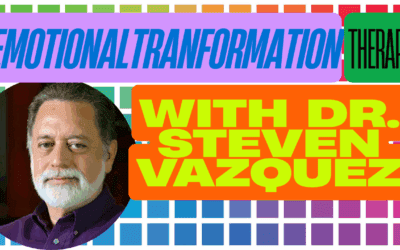

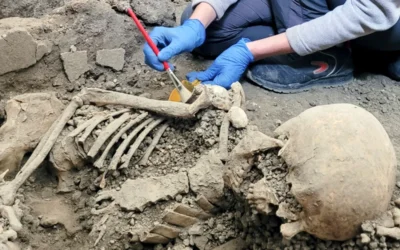














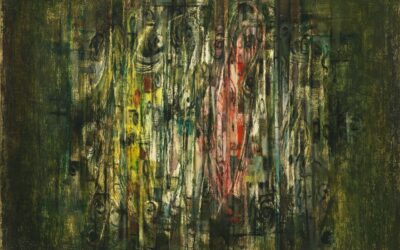
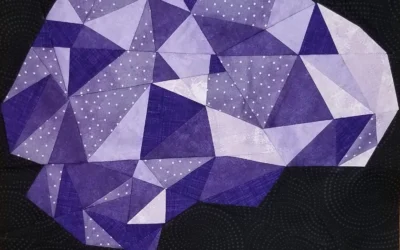


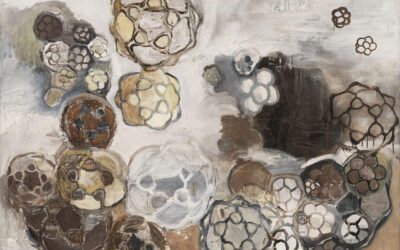

0 Comments